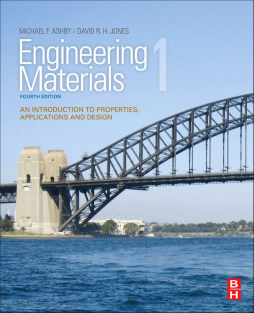
Additional Information
Book Details
Abstract
Widely adopted around the world, Engineering Materials 1 is a core materials science and engineering text for third- and fourth-year undergraduate students; it provides a broad introduction to the mechanical and environmental properties of materials used in a wide range of engineering applications. The text is deliberately concise, with each chapter designed to cover the content of one lecture. As in previous editions, chapters are arranged in groups dealing with particular classes of properties, each group covering property definitions, measurement, underlying principles, and materials selection techniques. Every group concludes with a chapter of case studies that demonstrate practical engineering problems involving materials.
Engineering Materials 1, Fourth Edition is perfect as a stand-alone text for a one-semester course in engineering materials or a first text with its companion Engineering Materials 2: An Introduction to Microstructures and Processing, in a two-semester course or sequence.
- Many new design case studies and design-based examples
- Revised and expanded treatments of stress–strain, fatigue, creep, and corrosion
- Additional worked examples—to consolidate, develop, and challenge
- Compendia of results for elastic beams, plastic moments, and stress intensity factors
- Many new photographs and links to Google Earth, websites, and video clips
- Accompanying companion site with access to instructors’ resources, including a suite of interactive materials science tutorials, a solutions manual, and an image bank of figures from the book
"Ashby (emeritus) and Jones (both Cambridge U.) have made considerable changes to the 2005 third edition (the first edition was published in 1980), among them new illustrative photographs, references to reliable websites, and worked examples to many of the chapters. The textbook is for a first course on materials for undergraduate engineering students, holding up one corner of a curriculum that includes design, mechanics, and structures. It covers price and availability; the elastic moduli; yield strength, tensile strength, and ductility; fast fracture, brittle fracture, and toughness; fatigue failure; creep deformation and fracture; oxidation and corrosion; and friction, abrasion, and wear." --Reference and Research News, October 2012
